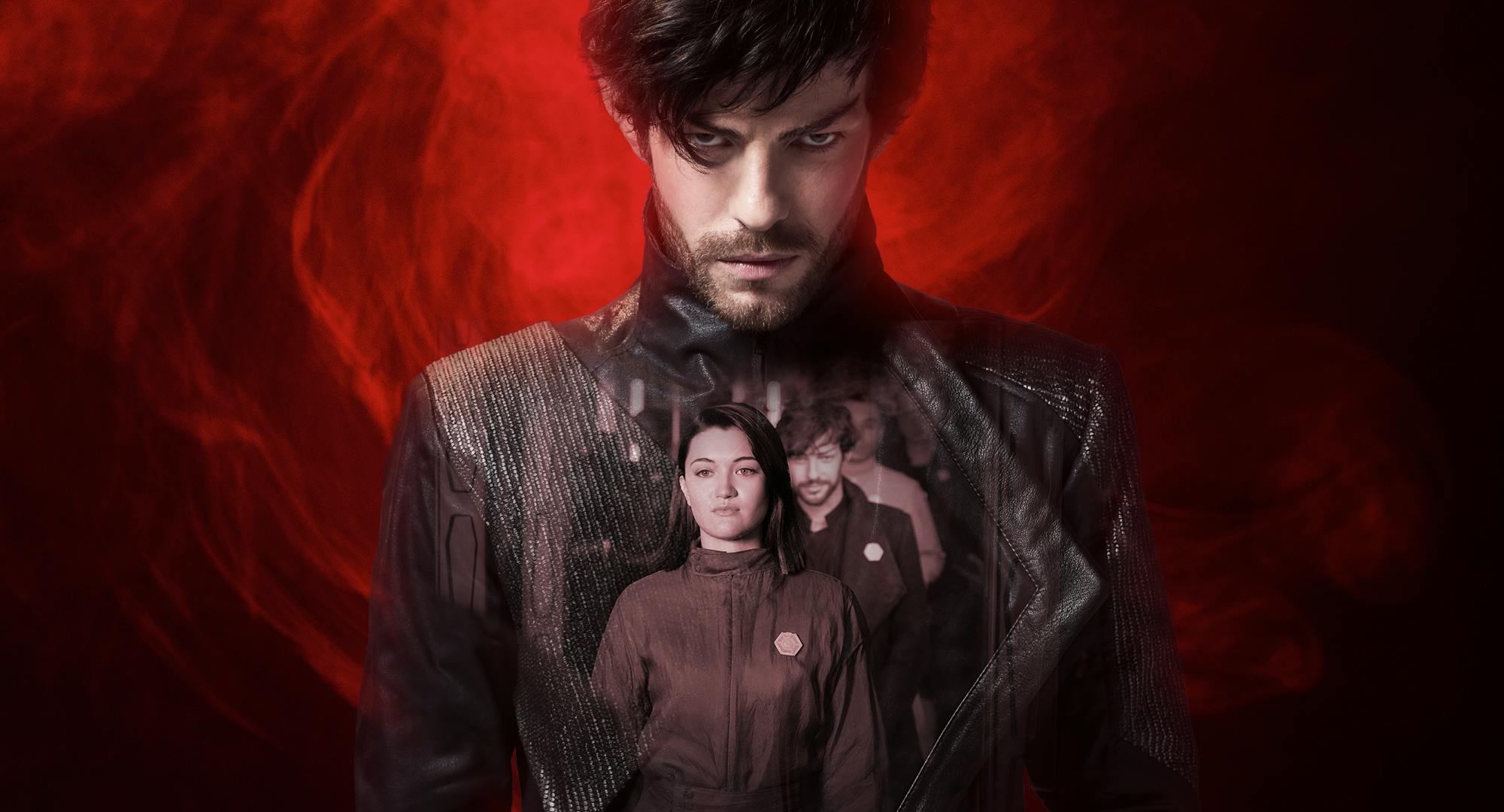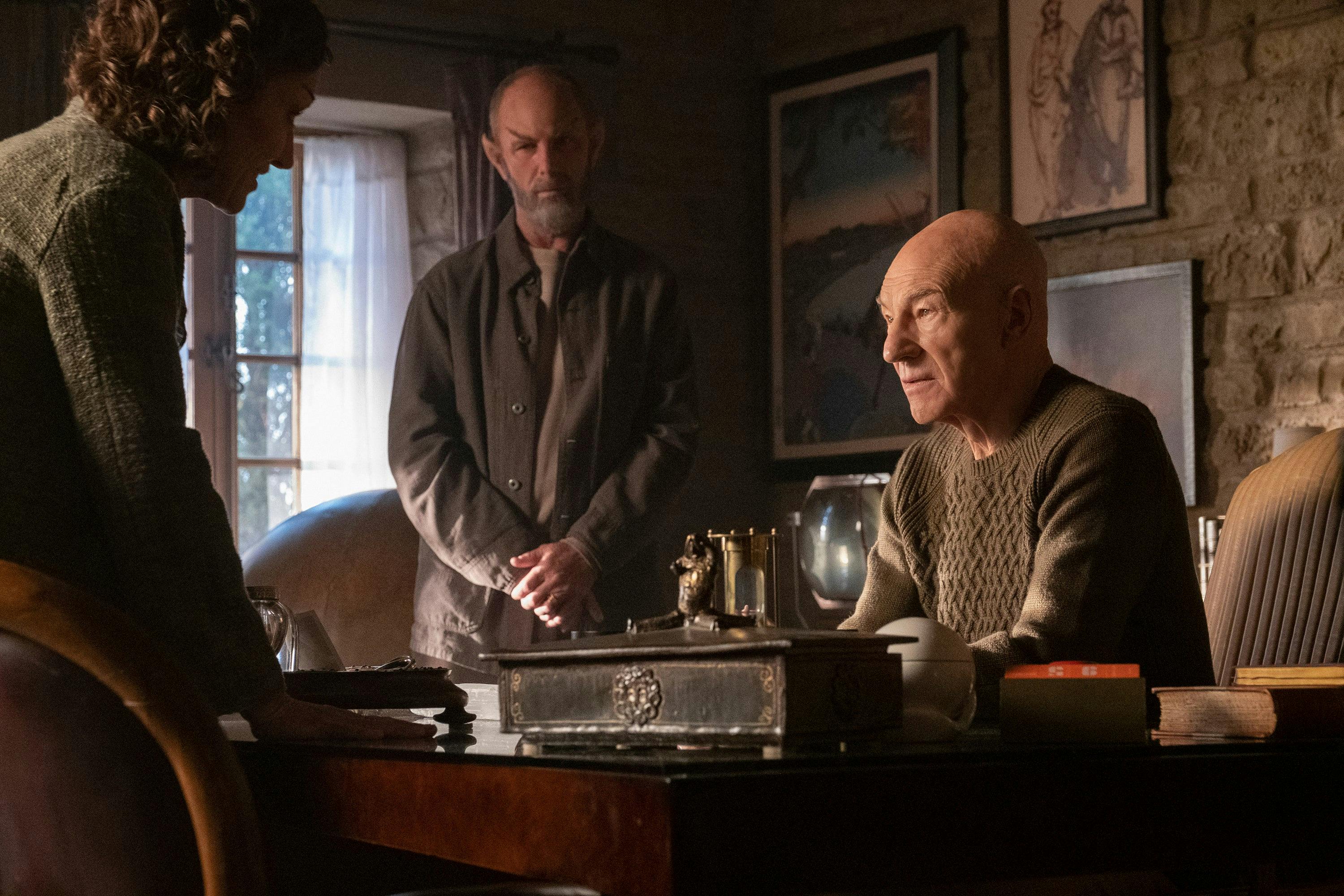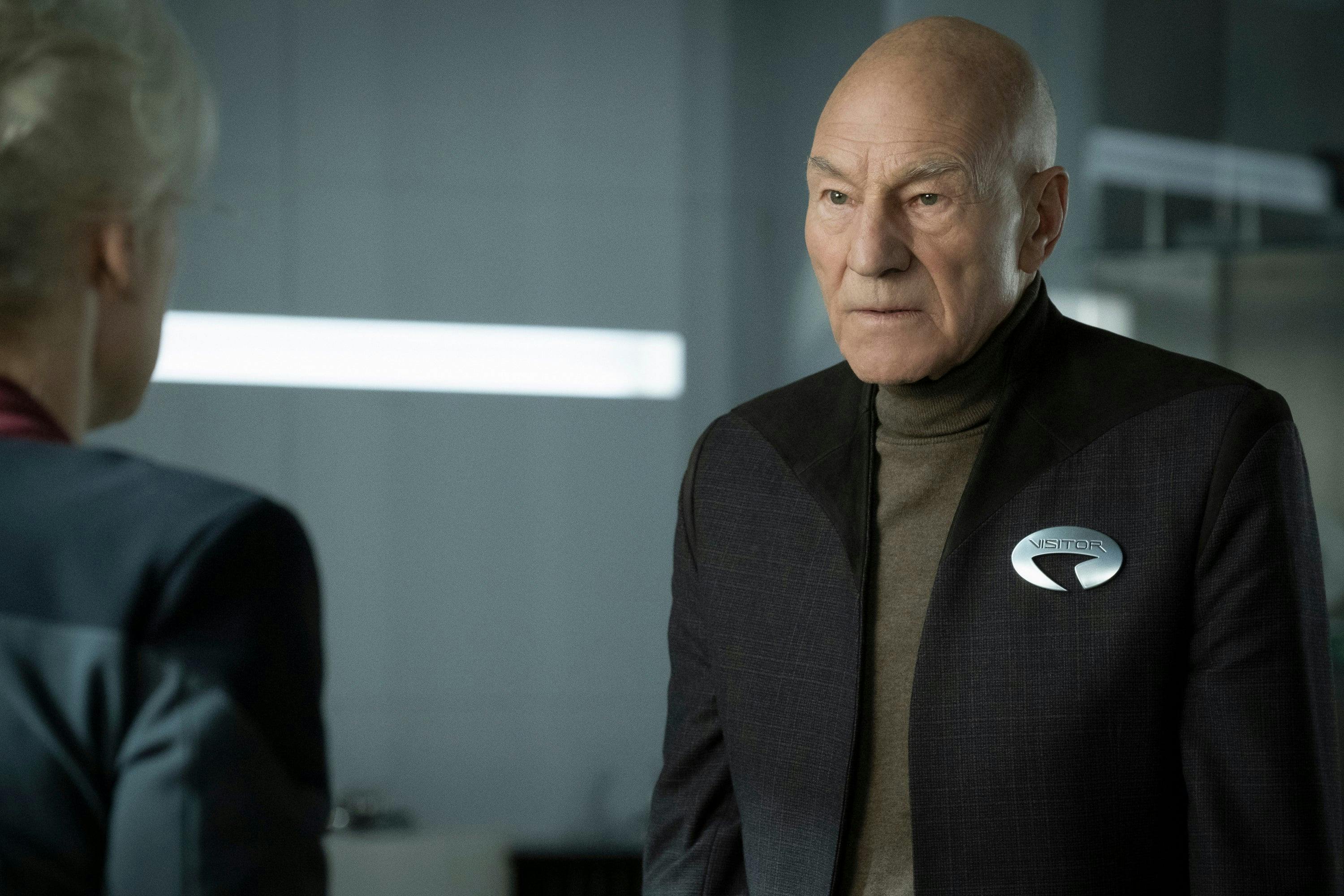Published Jan 31, 2020
Recap: Star Trek: Picard — Maps and Legends
The plot thickens as Picard's adventure moves forward and new, mysterious characters are introduced.

StarTrek.com
After a pretty incredible premiere episode with “Remembrance,” Star Trek: Picard is back with the sophomore episode of its first season, “Maps and Legends.” The cast, writers, and those involved in the show’s production have all made it clear that the first three episodes of the series constitute a single arc; the opener that sets the stage for what’s to come. That means that there’s quite a bit left to discover about the players, setting, and plot surrounding Jean-Luc Picard, and this episode gave us one big reveal after another.
The episode opens on First Contact Day 14 years ago at the starship construction facility Utopia Planitia on Mars, where they were presumably refitting old starships and building new ones for the Romulan rescue armada. We get to see the synths who, interestingly, are clearly based on Data with their pale skin and yellow eyes — though that might also just be a lack of desire to put any effort into appearance and pigmentation, considering these are clearly non-sentient models made to be workhorses, and are treated as such by their co-workers.
Despite the lighthearted banter in this scene, there’s a tension running throughout it — you, as the viewer, know that these synths are going to rebel and all these people are going to die. It’s almost excruciating to watch these people go about their daily lives, oblivious to the tragedy that’s about to occur. It’s pretty grisly when the inevitable happens.
While the question of what, exactly, happened to the synths was raised and then brushed away in the premiere, it takes center stage here. Clearly, the synth at the center of the action received programming that instructed it to take down Mars’ defense grid and to attack its co-workers before turning its weapon on itself, presumably to prevent anyone from analyzing any remains to figure out what, exactly, happened. Where did that programming come from? What happened here? Why would anyone want to destroy the Romulan rescue armada (this may be a question with too many answers, given the Romulans’ reputation in the galaxy)? Opening with this scene makes it clear that these questions are relevant and the answers are very complicated.

StarTrek.com
We return to present day with Jean-Luc, Zhaban, and Laris analyzing Dahj’s death. While the three suspect the Tal Shiar, the Romulan secret police, Laris has another theory: the Zhat Vash. Zhaban describes them as a Tal Shiar myth (if you’re looking for more on this organization, try The Next Generation’s ”Face of the Enemy” and Deep Space Nine’s “Improbable Cause” and “The Die is Cast”), but they are an older and even more secretive organization that centers around one mystery that we’re likely going to uncover over the course of the season. It’s safe to say it has something to do with their hatred for and fear of artificial intelligence.
Embedded in this is a more subtle revelation, but perhaps an unsurprising one — it seems as though both Zhaban and Laris are former Tal Shiar (and that it’s a family affair for Zhaban). It actually makes sense that they are present not just as Jean-Luc’s caretakers but, given what we know about his departure from Starfleet, his bodyguards as well.
As an aside, can we talk about Jean-Luc’s fantastic sweater? I mean, it has elbow patches. I’m not sure who knit it for him, but I’d be remiss if I didn’t mention how incredible it is. The clothing in this show generally is very interesting — it’s clear that they’re going for a more 21st century aesthetic instead of the traditional and often bizarre leisure look that we saw in The Next Generation previously, and I think it’s a great look.

StarTrek.com
Meanwhile, aboard the Borg cube, it’s clear that Narek and Soji have gotten . . . erm . . . closer. The question is whether he knows what she is — could he be Zhat Vash? After all, he did pretty much make a beeline for her in the first episode. He’s a bit of a mystery in and of himself — he has a piece of technology on his ear, which makes me wonder what exactly is going on with him and what his motives for being on that cube might be.
In their conversation about the Borg cube, though, it’s clear that the “artifact” is disconnected from the Collective, and that there are former drones working aboard it. What is less clear is what, exactly, the Romulans are interested in, given Laris’s statement that they are a species distrustful of any kind of artificial intelligence. I have a feeling there’s more to it than just profit, as Soji implied.

StarTrek.com
Through some pretty incredible investigating, Laris (who is quickly becoming my new favorite character) determines that Dahj’s twin, Soji, is not on Earth — which means it’s time for Jean-Luc to get ahold of a ship. First, he has to be medically cleared for interstellar travel, which presents a bit of a hurdle — he has a spot on his parietal lobe. In The Next Generation finale “All Good Things...,” this spot had developed into a neurological disorder called Irumodic Syndrome that caused delusions and eventually led to death — so it’s likely that whatever that spot is, it’s going places that Jean-Luc does not want to go. He is grappling with a terminal diagnosis, but he doesn’t care about the ramifications right now — he gets his certification and goes to the one place he probably shouldn’t: Starfleet Headquarters.
Predictably, it ends in disaster. He is unceremoniously denied reinstatement and a ship, but we also see the toxic thinking at the heart of the Starfleet, which Jean-Luc fought against — preserving the Federation was, quite simply, more important than the lives of billions of Romulans.
He also made the mistake of cluing Starfleet leadership into his theories about Bruce Maddox and the existence of a Romulan synth conspiracy, which the Vulcan (or is she? Vulcans and Romulans are the same species, divided by philosophy rather than biology — The Next Generation episodes “Unification, Parts I and II” deal with this schism) Head of Starfleet Security finds very interesting.
Meanwhile, back on the Borg cube, it becomes clear that not only is Narek the new man in charge, but that Soji is working directly with the former Borg drones — the “Nameless” — and she’s overseeing the harvest of their implants.

StarTrek.com
Dr. Jurati pays a house call to the Picard vineyards, and she reveals that Dahj was likely a constructed identity — it was a little too perfect. Clearly, Bruce Maddox (or whoever built it) wanted to get her placed at the Daystrom Institute, perhaps to continue his work. But the more pressing concern is Soji, which is why Jean-Luc contacts an old friend: Raffi Musiker, who we meet in the last moments of “Maps and Legends.”
The episode closes with an intriguing exchange between the head of Starfleet Security, Commodore Oh, and the loyal Lieutenant Rizzo, and it turns out the “Vulcan” knows a lot more than she claimed about the operation against Dahj. Her main issue is that the android was destroyed before she could be interrogated. She’s also aware that there’s a second model out there, and the lieutenant responds that her “best man” — Narek — is on the job. What’s more, it’s clear that Rizzo is an undercover Romulan, and Narek’s sister, and that they believe that there are more intelligent synths out there. And she basically threatens violence against Soji unless Narek can come up with “results.” The plot thickens!
Swapna Krishna (she/her) writes about tech, science, and sci-fi. She’s a contributing editor at SYFY FANGRRLS and has been published at Engadget, Gizmodo, Mental Floss, the Los Angeles Times, and more. You can find her on Twitter @skrishna
Star Trek: Picard airs on CBS All Access in the United States, in Canada on Bell Media’s CTV Sci-Fi Channel and OTT service Crave, and on Amazon Prime Video in more than 200 countries and territories.

